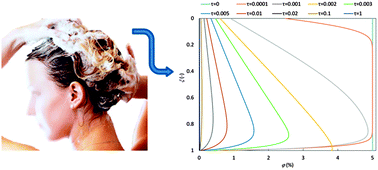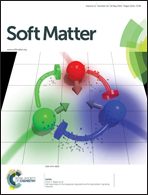Foam drainage placed on a porous substrate
Abstract
A model for drainage/imbibition of a foam placed on the top of a porous substrate is presented. The equation of liquid imbibition into the porous substrate is coupled with a foam drainage equation at the foam/porous substrate interface. The deduced dimensionless equations are solved using a finite element method. It was found that the kinetics of foam drainage/imbibition depends on three dimensionless numbers and the initial liquid volume fraction. The result shows that there are three different regimes of the process. Each regime starts after initial rapid decrease of a liquid volume fraction at the foam/porous substrate interface: (i) rapid imbibition: the liquid volume fraction inside the foam at the foam/porous substrate interface remains constant close to a final liquid volume fraction; (ii) intermediate imbibition: the liquid volume fraction at the interface with the porous substrate experiences a peak point and imbibition into the porous substrate is slower as compared with the drainage; (iii) slow imbibition: the liquid volume fraction at the foam/porous substrate interface increases to a maximum limiting value and a free liquid layer is formed between the foam and the porous substrate. However, the free liquid layer disappears after some time. The transition points between these three different drainage/imbibition regimes were delineated by introducing two dimensionless numbers.


 Please wait while we load your content...
Please wait while we load your content...